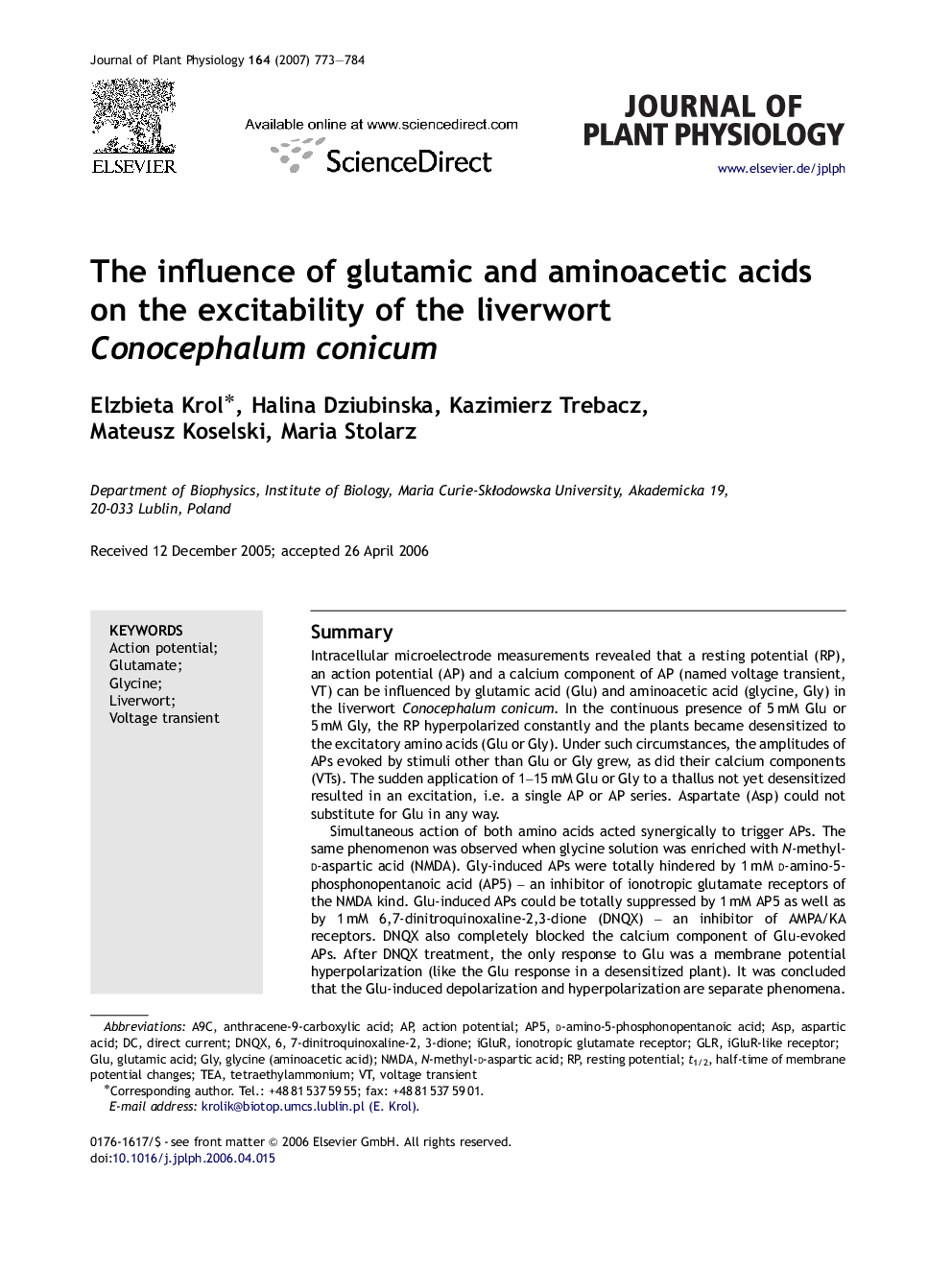| Article ID | Journal | Published Year | Pages | File Type |
|---|---|---|---|---|
| 2057512 | Journal of Plant Physiology | 2007 | 12 Pages |
SummaryIntracellular microelectrode measurements revealed that a resting potential (RP), an action potential (AP) and a calcium component of AP (named voltage transient, VT) can be influenced by glutamic acid (Glu) and aminoacetic acid (glycine, Gly) in the liverwort Conocephalum conicum. In the continuous presence of 5 mM Glu or 5 mM Gly, the RP hyperpolarized constantly and the plants became desensitized to the excitatory amino acids (Glu or Gly). Under such circumstances, the amplitudes of APs evoked by stimuli other than Glu or Gly grew, as did their calcium components (VTs). The sudden application of 1–15 mM Glu or Gly to a thallus not yet desensitized resulted in an excitation, i.e. a single AP or AP series. Aspartate (Asp) could not substitute for Glu in any way.Simultaneous action of both amino acids acted synergically to trigger APs. The same phenomenon was observed when glycine solution was enriched with N-methyl-d-aspartic acid (NMDA). Gly-induced APs were totally hindered by 1 mM d-amino-5-phosphonopentanoic acid (AP5) – an inhibitor of ionotropic glutamate receptors of the NMDA kind. Glu-induced APs could be totally suppressed by 1 mM AP5 as well as by 1 mM 6,7-dinitroquinoxaline-2,3-dione (DNQX) – an inhibitor of AMPA/KA receptors. DNQX also completely blocked the calcium component of Glu-evoked APs. After DNQX treatment, the only response to Glu was a membrane potential hyperpolarization (like the Glu response in a desensitized plant). It was concluded that the Glu-induced depolarization and hyperpolarization are separate phenomena. The stimulatory effects of both Glu and Gly on liverwort excitability may be the consequences of an activation of a variety of ionotropic Glu receptor subtypes.
